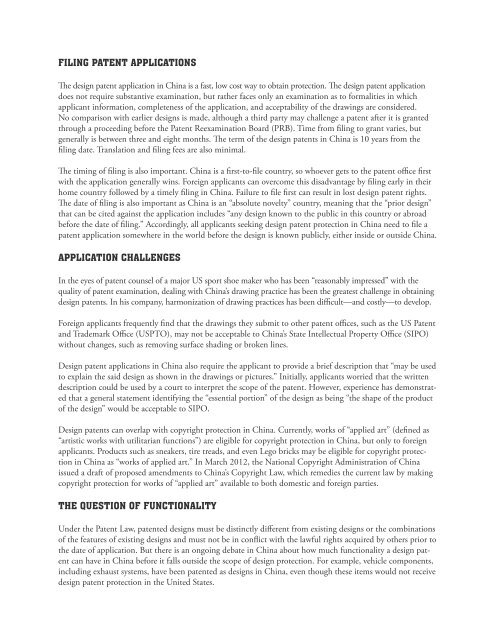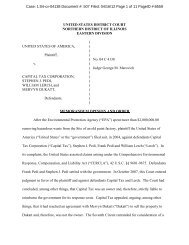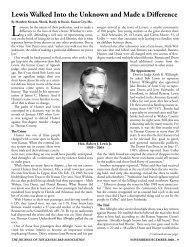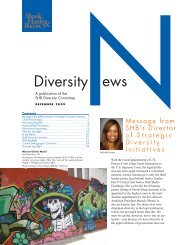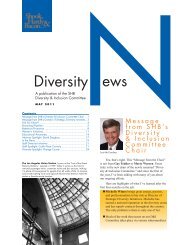Obtaining and Enforcing Design Patents in China - Shook, Hardy ...
Obtaining and Enforcing Design Patents in China - Shook, Hardy ...
Obtaining and Enforcing Design Patents in China - Shook, Hardy ...
You also want an ePaper? Increase the reach of your titles
YUMPU automatically turns print PDFs into web optimized ePapers that Google loves.
FILING PATENT APPLICATIONS<br />
The design patent application <strong>in</strong> Ch<strong>in</strong>a is a fast, low cost way to obta<strong>in</strong> protection. The design patent application<br />
does not require substantive exam<strong>in</strong>ation, but rather faces only an exam<strong>in</strong>ation as to formalities <strong>in</strong> which<br />
applicant <strong>in</strong>formation, completeness of the application, <strong>and</strong> acceptability of the draw<strong>in</strong>gs are considered.<br />
No comparison with earlier designs is made, although a third party may challenge a patent after it is granted<br />
through a proceed<strong>in</strong>g before the Patent Reexam<strong>in</strong>ation Board (PRB). Time from fil<strong>in</strong>g to grant varies, but<br />
generally is between three <strong>and</strong> eight months. The term of the design patents <strong>in</strong> Ch<strong>in</strong>a is 10 years from the<br />
fil<strong>in</strong>g date. Translation <strong>and</strong> fil<strong>in</strong>g fees are also m<strong>in</strong>imal.<br />
The tim<strong>in</strong>g of fil<strong>in</strong>g is also important. Ch<strong>in</strong>a is a first-to-file country, so whoever gets to the patent office first<br />
with the application generally w<strong>in</strong>s. Foreign applicants can overcome this disadvantage by fil<strong>in</strong>g early <strong>in</strong> their<br />
home country followed by a timely fil<strong>in</strong>g <strong>in</strong> Ch<strong>in</strong>a. Failure to file first can result <strong>in</strong> lost design patent rights.<br />
The date of fil<strong>in</strong>g is also important as Ch<strong>in</strong>a is an “absolute novelty” country, mean<strong>in</strong>g that the “prior design”<br />
that can be cited aga<strong>in</strong>st the application <strong>in</strong>cludes “any design known to the public <strong>in</strong> this country or abroad<br />
before the date of fil<strong>in</strong>g.” Accord<strong>in</strong>gly, all applicants seek<strong>in</strong>g design patent protection <strong>in</strong> Ch<strong>in</strong>a need to file a<br />
patent application somewhere <strong>in</strong> the world before the design is known publicly, either <strong>in</strong>side or outside Ch<strong>in</strong>a.<br />
APPLICATION CHALLENGES<br />
In the eyes of patent counsel of a major US sport shoe maker who has been “reasonably impressed” with the<br />
quality of patent exam<strong>in</strong>ation, deal<strong>in</strong>g with Ch<strong>in</strong>a’s draw<strong>in</strong>g practice has been the greatest challenge <strong>in</strong> obta<strong>in</strong><strong>in</strong>g<br />
design patents. In his company, harmonization of draw<strong>in</strong>g practices has been difficult—<strong>and</strong> costly—to develop.<br />
Foreign applicants frequently f<strong>in</strong>d that the draw<strong>in</strong>gs they submit to other patent offices, such as the US Patent<br />
<strong>and</strong> Trademark Office (USPTO), may not be acceptable to Ch<strong>in</strong>a’s State Intellectual Property Office (SIPO)<br />
without changes, such as remov<strong>in</strong>g surface shad<strong>in</strong>g or broken l<strong>in</strong>es.<br />
<strong>Design</strong> patent applications <strong>in</strong> Ch<strong>in</strong>a also require the applicant to provide a brief description that “may be used<br />
to expla<strong>in</strong> the said design as shown <strong>in</strong> the draw<strong>in</strong>gs or pictures.” Initially, applicants worried that the written<br />
description could be used by a court to <strong>in</strong>terpret the scope of the patent. However, experience has demonstrated<br />
that a general statement identify<strong>in</strong>g the “essential portion” of the design as be<strong>in</strong>g “the shape of the product<br />
of the design” would be acceptable to SIPO.<br />
<strong>Design</strong> patents can overlap with copyright protection <strong>in</strong> Ch<strong>in</strong>a. Currently, works of “applied art” (def<strong>in</strong>ed as<br />
“artistic works with utilitarian functions”) are eligible for copyright protection <strong>in</strong> Ch<strong>in</strong>a, but only to foreign<br />
applicants. Products such as sneakers, tire treads, <strong>and</strong> even Lego bricks may be eligible for copyright protection<br />
<strong>in</strong> Ch<strong>in</strong>a as “works of applied art.” In March 2012, the National Copyright Adm<strong>in</strong>istration of Ch<strong>in</strong>a<br />
issued a draft of proposed amendments to Ch<strong>in</strong>a’s Copyright Law, which remedies the current law by mak<strong>in</strong>g<br />
copyright protection for works of “applied art” available to both domestic <strong>and</strong> foreign parties.<br />
THE QUESTION OF FUNCTIONALITY<br />
Under the Patent Law, patented designs must be dist<strong>in</strong>ctly different from exist<strong>in</strong>g designs or the comb<strong>in</strong>ations<br />
of the features of exist<strong>in</strong>g designs <strong>and</strong> must not be <strong>in</strong> conflict with the lawful rights acquired by others prior to<br />
the date of application. But there is an ongo<strong>in</strong>g debate <strong>in</strong> Ch<strong>in</strong>a about how much functionality a design patent<br />
can have <strong>in</strong> Ch<strong>in</strong>a before it falls outside the scope of design protection. For example, vehicle components,<br />
<strong>in</strong>clud<strong>in</strong>g exhaust systems, have been patented as designs <strong>in</strong> Ch<strong>in</strong>a, even though these items would not receive<br />
design patent protection <strong>in</strong> the United States.


